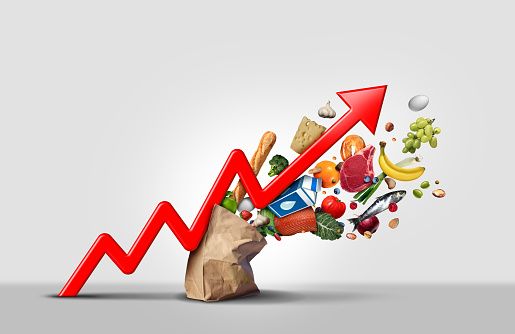So what is inflation?

It seems the only economic news that matters in Australia at the moment is the rate of inflation, which has now reached 6.1 per cent for the last financial year – its highest rate in more than two decades. So, what is inflation and how bad is it?
To put this in context, Turkey’s current rate of inflation reached 78.6 percent in June according to the Turkish statistics agency, spurred on by some erratic and unconventional economic policies such as reducing interest rates.
In fact, the President of Turkey, Tayyip Erdogan was quoted in the media recently as explaining Turkey didn’t have an inflation problem but a cost-of-living problem. This prompted me to think exactly what is inflation and what is driving it?
In fact, it’s tempting to wonder what is wrong with inflation. Prices go up but typically so do wages and house prices and perversely, some people feel better off during periods of inflation. However, inflation is like a cancer in the economy.
It hits those on fixed and low incomes the hardest, it distorts market signals so people are tempted to tie up savings in non-productive assets such as property and it undermines attempts to build up businesses that are productive.
My colleague Michael Read put together an interest article in the Australian Financial review last week detailing 10 charts or aspects of the current bout of inflation which I thought provided some interesting insights as to just what is driving this round of price hikes.
Firstly, for almost three decades the Reserve Bank has been successful in using interest rates to keep inflation at or under its preferred rate of between 2 and 3 percent so it seems determined to keep on this path.
Real wages continue to lag price rises and this is unlikely to change any time soon and the professional money markets expect the Reserve Bank to keep pushing interest rates higher until certainly the end of this year in an effort to control inflation.
Price rises seem to be widespread across the economy with categories reporting price hikes reaching 65 out of 87 while the biggest price increases are occurring in goods and services that households can’t avoid buying such as food.
The only glimmer of hope for struggling households is that petrol prices while still at historically high levels appear to be falling and rents in Melbourne and Sydney have fallen in the year to June, although they have increased everywhere else.
While price hikes have mostly occurred for the cost of goods rather than services, the biggest drivers in the inflation rate were a 20 per cent rise in the price of new housing which accounts for almost 9 percent of the index and a 32 percent rise in the price of petrol over the year which accounts for 3 percent.
But as I pointed out in the beginning of this article, Australia’s inflation rate is low by international standards. Only five developed countries currently have a lower rate of inflation with Korea reporting exactly the same rate as inflation.
The United States is currently reporting an annual inflation rate of 9.1 percent and rising while the United Kingdom is also reporting an escalating inflation rate of 8.2 per cent. Both countries though are moving down the same path of increasing interest rates to stymie inflation.
The question is simply how high will interest rates need to go and for how long both in Australia and overseas inflation rates.
